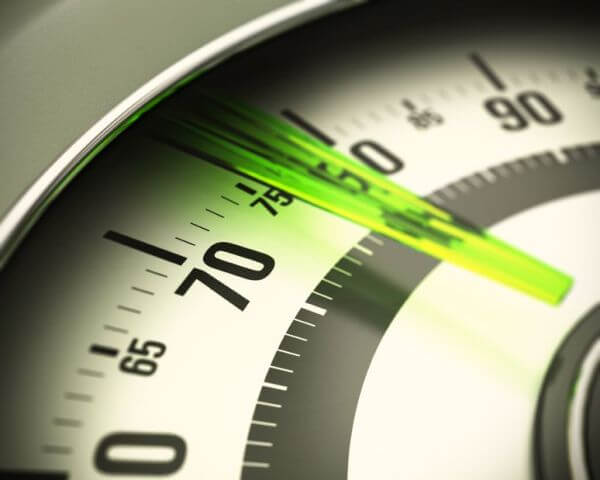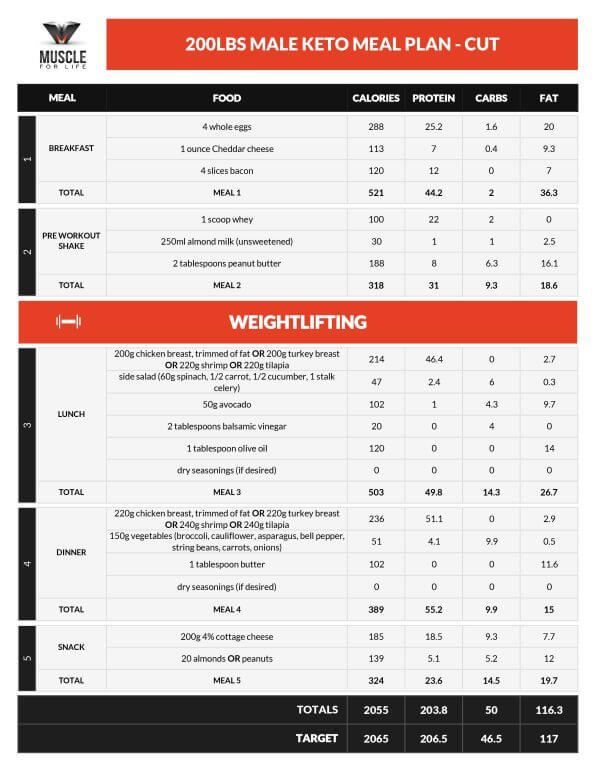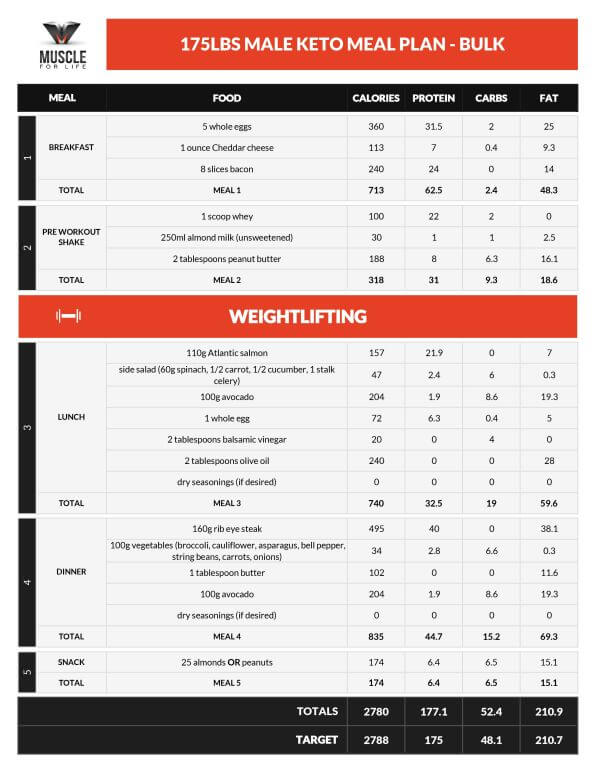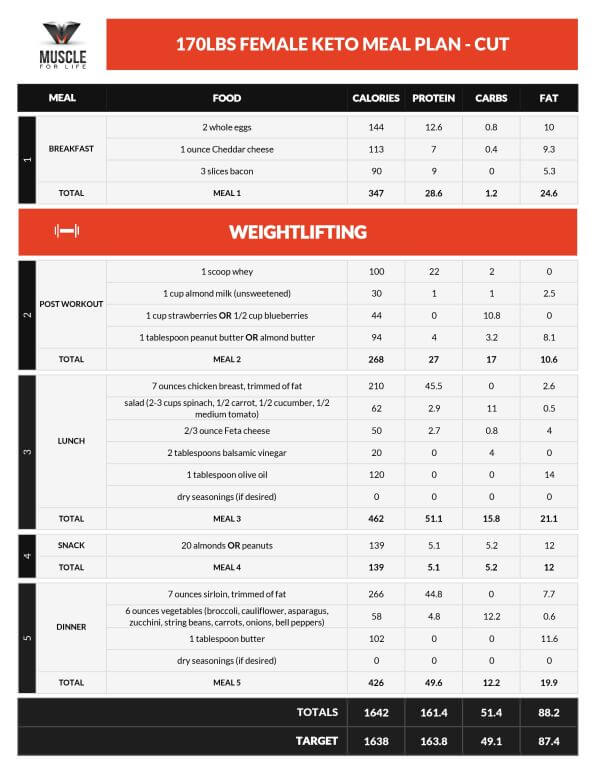How did a diet meant for treating epileptic seizures turn into a popular weight loss fad?
That’s the story of the ketogenic diet, which was introduced in 1921 by an endocrinologist named Dr. Henry Geyelin.
Geyelin, presenting at the annual meeting of the American Medical Association, explained that the ancient Greeks had discovered that fasting was an effective method of managing epileptic seizures.
Hippocrates wrote about it and, like Geyelin, found that the seizures would return once eating resumed. Why? What was it about fasting that suppressed the seizures?
Well, epileptic seizures are triggered by electrical abnormalities in the brain. The causes can vary, from genetics to brain injury, but more common is chronic inflammation throughout the body.
Geyelin found that when people fast, two major changes occur in the blood: glucose levels fall and ketone levels rise.
You’ve probably heard of glucose, also known as blood sugar, but not ketones, which are carbon-oxygen molecules produced by the liver that cells can use for energy instead of glucose.
This finding fascinated Geyelin and he set out to determine if similar effects could be achieved without starvation.
A decade of work proved they could, and the “ketogenic diet,” as it would be later called, was born.
The purpose of the ketogenic diet is to maintain a state of ketosis, wherein the body’s primary energy source is ketones, not glucose.
Early studies showed it was an extremely effective treatment for seizures, but in 1938, it was eclipsed by the anticonvulsant drug phenytoin. This medication became the standard treatment for epilepsy, effectively retiring the ketogenic diet from clinical applications.
In time, the diet was all but forgotten, languishing in obscurity until, recently, exploding into the mainstream in a way Geyelin could have never imagined.
This time the ketogenic diet is being promoted as much more than a therapeutic agent. If we’re to believe the hype, it’s a panacea of sorts, helping us lose fat faster, maintain a leaner physique, think clearer, feel better, live longer, and more.
Can it deliver on these promises though? Or should it return to the annals of medical research from whence it came?
Let’s find out.
Table of Contents
+Want to listen to more stuff like this? Check out my podcast!
How Does the Ketogenic Diet Work?
As you know, the point of the ketogenic diet is to keep the body in a state of ketosis.
The traditional ketogenic diet as developed for treating epilepsy called for 4 grams of fat for each gram of protein and carbohydrate (which is why it was also called the “4:1 diet”).
The problem with this diet for anything other than medical use is obvious: protein intake is very low, which isn’t optimal for a variety of reasons.
The type of ketogenic diets popular today are generally high-protein variations of the original.
Protein recommendations can vary, ranging from 20 to 30% of daily calories, but, in true ketogenic diets, carbohydrate intake is set to 50 grams or less per day. The rest of your calories come from dietary fat.
The Ketogenic Diet and Weight Loss
Let’s tackle the most controversial aspect of the ketogenic diet first.
Does it help you lose weight faster than a traditional, higher-carb diet?
Absolutely.
Does it help you lose fat faster, though?
Absolutely not.
And how the hell does that work, you’re wondering?
Well, the first thing you need to know is how carbohydrate intake relates to glycogen storage and water retention.
How Carbohydrate Intake Affects Your Weight
Glycogen is a form of glucose stored in the liver and muscle tissues and the primary dietary source of glucose is carbohydrate. This is why research shows that increasing carbohydrate intake increases glycogen storage and reducing intake reduces glycogen levels.
Here’s the kicker, though: glycogen is stored with three to four parts water. That means that every gram of glycogen stored comes with three to four grams of water.
When you consider that the average man can store up to 15 grams of glycogen per kilogram of body weight, and that exercise increases the glycogen storage capacity of muscle, you see how much weight can change due to fluctuations in glycogen levels alone.
For instance, I weigh about 86 kilograms (190 pounds) and have quite a bit more muscle than the average man, and I exercise regularly, and I eat a relatively high-carbohydrate diet (1.5 to 2 grams of carbs per pound with occasional refeeds).
It’s hard to predict exactly how much glycogen I’m holding, but a “safe” assumption is 700 to 800 grams, and that means I’m also holding 2,100 to 2,400 grams of water. This is a grand total weight of 2,800 to 3,200 grams, or 6 to 7 pounds.
Now, what do you think would happen if I switch to a ketogenic diet, dramatically reducing my carbohydrate intake?
That’s right–I would also see a dramatic reduction in whole-body glycogen levels, which would flush out a large amount of water as well.
And as if all that weren’t enough, research also shows that carbohydrate intake also influences fluid retention in other ways. The simple fact is the more carbs you eat, the more water your body naturally holds, which is one of the reasons bodybuilders restrict carbohydrate intake leading up to a show.
(When you’re very lean, even slight reductions in subcutaneous water can make a difference visually.)
So, the net result of switching to a ketogenic diet is I would see a rapid drop in body weight–several pounds in just my first week or two–but I would be wrong to think it’s a rapid reduction of body fat.
Because it wouldn’t be.
You see, claims that low-carb dieting are better for fat loss than high-carb are specious, and here’s why…
The Truth About Low-Carb Dieting and Fat Loss

Yes, I know that low-carb evangelists bandy about quite a few studies as irrefutable proof that low-carb dieting is better for weight loss.
It all sounds very scientific and convincing and, understandably, wins new converts every day.
There’s a big, gaping hole in the research though, and it relates to protein intake.
Namely, every single low-carb weight loss trial I’ve seen being used to sell the ideology has a major flaw: the low-carb diets contain more protein than the high-carb ones.
Yes, one for one, without fail.
This presents a serious problem because it means we’re not looking at a true apples-to-apples comparison of dieting methodologies. Instead, we’re looking at how a high-protein and low-carbohydrate diet fares against a low-protein and high-carb diet.
The former wins every time but is it because of the low-carb or high-protein element? Anti-carbers will tell you it’s the magic of low-carb eating, of course but are they right?
Well, to know that, we would need to look at weight loss trials that kept protein intake high in both the low- and high-carb groups.
And lo and behold, I know of four that meet those criteria and their findings are summarized by this from one conducted by researchers from Harvard University:
“Reduced-calorie diets result in clinically meaningful weight loss regardless of which macronutrients they emphasize.”
That is, so long as you maintain a calorie deficit, raising or lowing carbohydrate intake doesn’t significantly impact fat loss.
It’s also worth looking at a recent (and extensive) meta-analysis conducted by researchers from several universities that involved the review of 19 weight loss trials. I quote:
“Trials show weight loss in the short-term irrespective of whether the diet is low CHO [carbohydrate] or balanced. There is probably little or no difference in weight loss and changes in cardiovascular risk factors up to two years of follow-up when overweight and obese adults, with or without type 2 diabetes, are randomised to low CHO diets and isoenergetic balanced weight loss diets.”
And last but not least, I should mention that I’ve worked directly with thousands of people, helping them lose thousands of pounds collectively, and I can tell you with absolute certainty:
You can get the body of your dreams eating the carbs you love.
That said…there is an exception.
Every once in a while I run into someone that is lean and trying to get really lean but is finding it inexplicably hard to get rid of the last bits of stubborn fat.
Unfortunately, some people have insulin sensitivity issues despite exercising regularly and being healthy and relatively lean, and thus don’t respond well to high-carbohydrate dieting.
Two of the common symptoms of this is sluggishness and bloating after eating carbs and, as I noted earlier, stubborn fat deposits that are strangely hard to eliminate.
You’re probably wondering why insulin resistance can make it harder to lose stubborn fat, and the reason is simple: insulin resistance impairs muscle’s ability to oxidize carbohydrate, which means a greater proportion is diverted to the liver and converted into fat.
And when you’re trying to whittle down the last bits of body fat, any additional fat storage that’s occurring can noticeably hinder progress.
In such cases, then, the sensible thing to do is work with, not against one’s biology.
That doesn’t mean, however, that these people need to turn to the ketogenic diet, however. Carb cycling can be particularly effective for people struggling with insulin sensitivity issues and is far more enjoyable and suitable for athletes, weightlifters, and the like.
The Ketogenic Diet and Building Muscle

For over a century now, bodybuilders have known of the correlation between carbohydrate intake and strength and muscle growth.
Their observations were simple: the more carbs you eat, the stronger you are in the gym; and the stronger you are in the gym, the better you can overload and grow your muscles.
Given what we know about how carbs affect blood sugar and glycogen levels, this makes sense.
Eat carbs and you feel energized and your body is able to synthesize glycogen, which is then used as fuel for exercise.
This is why research shows that a high-carbohydrate diet improves exercise performance, primarily by keeping your muscles “full” of glycogen.
This is also why studies show that low-carb dieting impairs weightlifting performance.
And if you have any doubts about that research, just try cutting your carb intake in half for a couple of weeks (and replacing those calories with fat) and watch your lifts plummet.
There are other muscle-building benefits to high-carb dieting as well. To understand them, let’s quickly review the physiology of muscle growth.
The Simple Science of Muscle Growth
Every day, trillions of cells in your body are dying and being replaced. This is known as “cell turnover,” and it’s regulated by a complex system of proteins and hormones.
The process by which proteins are created to replace degraded cells is known as protein biosynthesis, or protein synthesis.
Under normal health and dietary circumstances, the cellular degradation and regeneration rates remain balanced. This is why your total lean mass remains more or less level on a day-to-day basis.
Now, when you engage in resistance training, one of the byproducts is damaged muscle cells that must now be replaced. (This, by the way, is the real cause of muscle soreness–not lactic acid buildup as some people think.)
And not just replaced, actually, but added to. Your body wants to adapt to better deal with the stimulus that caused the damage, and it accomplishes this by adding cells to the muscle fibers, which makes them bigger and stronger.
As you can imagine, this process requires higher-than-normal levels of protein synthesis. And, as far as building muscle goes, the higher protein synthesis rates are, the better.
You see, when viewed through the lens of protein metabolism, muscle growth is simply protein synthesis rates exceeding protein breakdown rates.
The difference between muscle protein synthesis and degradation rates is known as muscle protein balance.
If, over time, your body synthesizes more muscle proteins than it loses, that’s a positive balance and you gain muscle. If it doesn’t, that’s a neutral or negative balance and you don’t.
Thus, strategies to increase protein synthesis and/or decrease protein degradation accelerate muscle growth. This is one of the reasons steroids are so effective for building muscle.
More Carbs = More Protein Synthesis, More Muscle, and More Recovery

Research shows that glycogen availability directly influences protein synthesis and degradation rates.
Simply put: low-carb diets result in lower levels of protein synthesis than high-carb ones.
Another way that carbs affect muscle protein balance favorably has to do with insulin production.
Insulin is a hormone released by the pancreas that shuttles nutrients from your blood into your cells.
It also has anti-catabolic properties, which means that when insulin levels are elevated, breakdown of muscle proteins is suppressed.
Now, as insulin production is stimulated by eating food, and by eating carbs in particular, it’s not surprising that people following a high-carb diet have generally higher insulin levels than people following a low-carb one.
This is undesirable if you’re sedentary and overweight, of course. Carbs are primarily energetic and if you don’t move your body much, it has no need for excessive amounts of food energy.
Elevated insulin levels are highly desirable if you’re trying to build muscle though, because it’s a more anabolic environment in which muscles can grow larger quicker.
(This is one of the reasons why many bodybuilders inject insulin several times per day when they eat…which is very dangerous and I most definitely do not recommend.)
And this isn’t just theory, either.
Research conducted by scientists at Ball State University found that low muscle glycogen levels (which is inevitable with low-carbohydrate dieting) impair post-workout cell signaling related to muscle growth.
Another study conducted by researchers at the University of North Carolina found that when combined with daily exercise, a low-carbohydrate diet increased resting cortisol levels and decreased free testosterone levels.
Cortisol is a hormone that breaks down tissues, including muscle, and testosterone is the hormonal driver of muscle growth.
When it comes to building muscle, you want low resting cortisol and high free testosterone levels–the exact opposite of what a low-carb diet produces.
These studies help explain the findings of other studies on the matter of carbs and body composition and performance.
For example, a study conducted by researchers at the University of Rhode Island looked at how low- and high-carbohydrate intakes affected exercise-induced muscle damage, strength recovery, and whole body protein metabolism after a strenuous workout.
What they found was the subjects on the low-carbohydrate diet lost more strength, recovered slower, and showed lower levels of protein synthesis.
It’s also worth noting that the “low-carb” group wasn’t all that low, really. They were eating about 220 grams of carbs per day versus the high-carb intake of 350 grams per day. And these effects become even more pronounced as carbs intake decreases.
Yet another study worth mentioning was conducted by researchers at McMaster University, which compared high- and low-carbohydrate dieting with subjects performing daily leg workouts.
Subjects on the low-carb diet (30% of daily calories) showed higher rates of protein breakdown and lower rates of protein synthesis than the high-carb dieters (60% of daily calories), resulting is less overall muscle growth.
The bottom line is this:
The evidence is abundantly clear. High-carb dieting is superior to low-carb for building muscle and strength.
This is something bodybuilders have known for over a century now, going all the way back to Sandow, and why I’m generally an advocate of high-carb dieting for building muscle and strength and for preserving muscle while in a calorie deficit.
Specifically, I never drop my carbohydrate intake lower than about .8 grams per pound of body weight when cutting, and I’ll go as high as 2 to 2.5 grams per pound when bulking.
What About Evidence That Low-Carb Is Better for Building Muscle?

This excursion carbs and muscle wouldn’t be complete without addressing some of the evidence to the contrary.
For example, here’s one of the studies often cited to argue for the superiority of ketogenic dieting for building muscle
Researchers had 12 of 20 men switch to a ketogenic for 42 days and perform “a variety of different aerobic and weight-training routines.” Both the high- and low-carb groups were in a calorie deficit as well.
The result was the low-carb group lost about seven pounds of fat and gained just over two pounds of muscle whereas the high-carb group lost no fat and gained under one pound of muscle.
Well, what you now know about why reducing carbs doesn’t accelerate fat loss and how carbs relate to building muscle, you have to wonder, where’s the fly in the soup?
Oh, there it is.
The first problem with this study is the difference in protein intake between the two groups.
Subjects on the ketogenic diet ate close to 180 grams of protein per day whereas the high-carb group ate only 80 grams. 80 grams per day for a weightlifter is pitifully low and as you know, when caloric intake is matched, high-protein dieting trumps low-protein every time.
The second problem is the ambiguity on the exercise programs followed.
Based on the wording given above, we don’t really know what people were doing and it sounds like everyone was doing something different.
So, all this study really shows is that a high-protein, low-carb diet is probably better for losing fat and building muscle than a low-protein, high-carb one.
Not too exciting.
Another study precious to ketogenic dieters was conducted by researchers at the University of Tampa.
Twenty-six college-aged and resistance-trained men were divided into a ketogenic diet group and a traditional Western diet group.
The keto dieters got 5% of calories from carbs, 75% from fat, and 20% from protein. The Western dieters got 55% from carbs, 25% from fat, and 20% from protein. Protein intake (in grams) was matched and so was caloric intake, and all subjects lifted weights 3 days per week on the same program.
The results?
After 11 weeks, the low-carb dieters gained an average of 9.5 pounds of muscle and lost 4.8 pounds of fat and the high-carb dieters gained an average of 4.8 pounds of muscle and lost 3.3 pounds of fat.
And how does that work, exactly? Good question. And we can’t know because you can only access the abstract, not the full paper.
I’m skeptical though.
First, the study’s author mentioned during his presentation that subjects carb loaded at the end of the 11-week period.
As you know, this rapidly increases glycogen and water storage, which registers as lean mass gained.
Second, this is the same research group that gave us this gem “proving” that the (natural) supplement HMB is basically as effective as steroids.
Yeah…I don’t think so.
(And gee golly JISSN sure does love publishing pro-HMB research…)
That said, falsifying data to sell supplements makes sense, but falsifying data to sell people on a rather unmarketable diet? Why bother?
The spotlight, of course.
That abstract has made quite a splash since appearing last year and got a lot of people talking. And, as a scientist, the more you can get people talking about your research, the easier it’s going to be to get more work.
I’m not saying shenanigans are afoot at UT but I’m skeptical of research coming from that team being published in JISSN.
So, if you’re like me and prefer to go with the preponderance of evidence, the ketogenic diet just isn’t ideal for building muscle.
The Ketogenic Diet and General Health

Now that we’ve tackled the main reasons people turn to ketogenic dieting–to lose fat and/or build muscle faster–let’s return to its roots: health.
You already know that ketosis is an effective therapy for seizures, but research shows it has other health benefits as well.
The Ketogenic Diet and Type 2 Diabetes
Type 2 diabetes (T2D) is a metabolic disorder characterized by high blood sugar and insulin resistance.
Given the nature of the disease, it stands to reason that people afflicted with it would benefit from a low-carbohydrate diet. And that’s what research shows.
Specifically, studies show that when people with T2D restrict carbohydrate intake, several biomarkers and symptoms improve markedly.
The ketogenic diet can be so effective in managing the disease that (exogenous) insulin may be able to be withdrawn within just weeks of starting.
The bottom line is people with diseases related to carbohydrate metabolism (type 2 diabetes, metabolic syndrome, and insulin resistance) are very likely to benefit from low-carb dieting.
The Ketogenic Diet and Cancer
Research shows that insulin can contribute to the growth and proliferation of cancer cells by stimulating multiple mechanisms.
Studies also show that tumor cells “feed” on glucose, metabolizing it at much higher rates than normal tissues.
Hence, scientists believe that a low-carbohydrate diet may be an effective adjunct to traditional cancer therapies. And there’s mounting evidence that they’re right.
The Ketogenic Diet and Acne
A number have studies have been published in recent years linking certain food types with the development of acne. Top on the list are high-glycemic carbohydrates and dairy.
This is also born out by observational research showing that the prevalence of acne is substantially lower among peoples following non-Western traditional diets lower in carbohydrate.
The underlying mechanisms relate to the production of several hormones including insulin and insulin-like growth factor-1 (IGF-1).
These hormones can influence several factors underlying the development of acne and a ketogenic diet has been shown to be effective in improving acne symptoms.
The Ketogenic Diet and Neurological Diseases
Studies show that low-carb dieting may have therapeutic use in treating neurological disorders other than epilepsy.
Examples of include neurotrauma, headaches, Alzheimer’s and Parkinson’s disease, sleep disorders, brain cancer, autism and multiple sclerosis.
Scientists don’t fully understand the mechanisms behind this but research suggests it has to do with its neuroprotective effects.
Who Should Follow a Ketogenic Diet and Who Shouldn’t

As you can now see, despite its many fervent advocates, a ketogenic diet just doesn’t make sense for everyone.
Here’s how I see it:
If you have type 2 diabetes, metabolic syndrome, insulin resistance, cancer, or neurological disease, a ketogenic diet may be advisable.
Check with your doctor first, of course, but there is considerable research that a keto diet can help you.
If you’re overweight and sedentary, your diet should be low in carbohydrate.
Keto may be unnecessarily low but you have no need for more than 0.5 grams of carbohydrate per pound of body weight per day.
If you’re struggling with acne, eliminating high-glycemic carbs and reducing carb intake in general may help.
Dairy intake should be curbed as well.
If, however, you’re physically active, healthy, and have good insulin sensitivity, and are looking to build muscle and lose fat, the ketogenic diet isn’t for you.
As promising as some people may make it seem, the ketogenic diet just isn’t suited to these circumstances.
Instead, the exact opposite type of diet (high-carbohydrate and moderate/low-fat) is where you should begin.
And if you want to reap some of the ketone-related benefits of ketogenic dieting without having to actually do it, check out intermittent fasting.
The Ketogenic Diet Menu
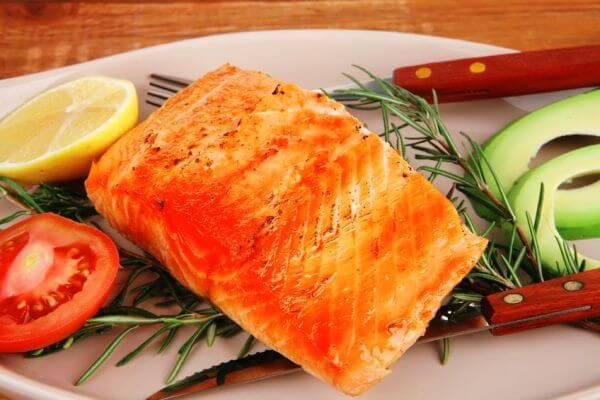
As you can imagine, the very-low-carbohydrate demands of ketogenic dieting mean the menu is fairly restricted.
Here’s a short list of “keto-friendly” foods that you’ll find in most ketogenic meal plans.
Keto-Friendly Sources of Fat
As the majority of calories on a ketogenic diet come from dietary fats, digestive tolerance is an important factor. Eventually large amounts of oils and dairy can cause gastrointestinal issues.
Here’s a list of popular choices that keto dieters mix and match to meet their high dietary fat needs:
- Avocado
- Butter
- Chicken
- Mayonnaise
- Olives & olive oil
- Coconut meat & coconut oil
- Nuts & nut butters like peanuts, pecans, almonds, macadamias, and walnuts
- Most seed & nut oils like sesame oil, flaxseed oil, almond oil, etc.
- Whole-fat diary like milk, heavy cream, sour cream, cottage cheese, and cream cheese (they’re fattier than they are protein-rich, so I’m including here)
Keto-Friendly Sources of Protein
Although the traditional keto diet was very low in both protein and carbs, modern incarnations are modified to raise protein levels for the preservation of lean mass.
Here are the most popular choices of protein for ketogenic dieting:
- Fattier cuts of red meats like beef, lamb, pork, and veal
- White meats like chicken, turkey, duck, and goose
- Fish and seafood of all kinds like salmon, sardines, snapper, calamari, and anchovies
- Shellfish like crab, lobster, shrimp, oysters, and mussels
- Eggs
- Bacon and sausage
- Nuts and nut butters
- Protein powders
Keto-Friendly Vegetables
If you’re following a ketogenic diet, you have to avoid starchy vegetables like corn, peas, potatoes, and sweet potatoes because they’re simply too high in carbohydrate.
Even sweeter veggies like tomatoes, carrots, peppers, and squash need to be limited.
Thus, the vegetables of choice for keto dieting are non-starchy, like…
- Asparagus
- Bok Choy
- Broccoli
- Brussels Sprouts
- Cabbage
- Cauliflower
- Celery
- Chives
- Cucumbers
- Garlic
- Leafy greens
- Lettuces and salad greens
- Mushrooms
- Olives
- Onions
- Pickles
- Sauerkraut
- Scallions
- Shallots
- Spinach
- Sprouts of all kinds
- Turnips
How to Create a Ketogenic Diet Plan
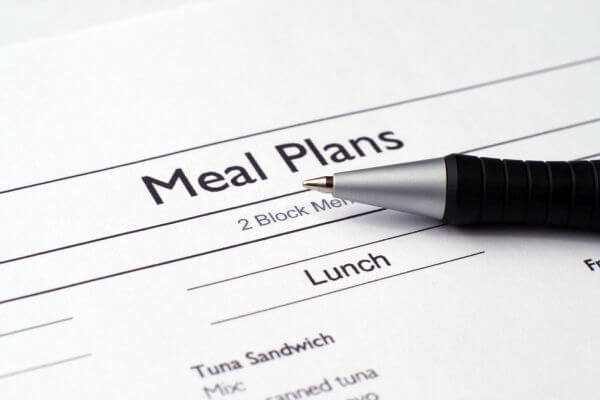
If you’re going to give the ketogenic diet a whirl, the first obstacle is creating meal plans to follow.
Here’s how to do it:
Use the following calculator to determine how much energy your body burns every day.
Enter your email so we can send them to you.Want to save your results?
The resulting number will be a fairly accurate measurement of the total amount of energy your body is burning every day, generally known as your total daily energy expenditure or TDEE.
If you ate that amount of calories every day, your weight would remain more or less the same. Thus, to reduce your weight, you have to eat less, which brings me to point three.
In case you’re wondering how this works, it uses the Katch McArdle formula to determine your basal metabolic rate and then multiplies it based on your activity level.
And in case you’re wondering why the activity multipliers are slightly lower than the standard ones, it’s because the standard multipliers are simply too high. Unless you have an abnormally fast metabolism, your TDEE will come out high using the standard multipliers and you’ll wonder why you can’t lose weight.
If you’re looking to lose weight, calculate your calorie deficit.
I recommend a moderately aggressive calorie deficit of 20 to 25%. Anything larger can cause unwanted side effects associated with “starvation dieting.”
So what this means is you want to set your daily calorie intake to 75 to 80% of your TDEE.
For example, my TDEE is about 3,000 calories, so when I want to lose weight, I set my intake to about 2,300 calories.
If you’re looking to gain weight, calculate your calorie surplus.
I recommend a slight calorie surplus of about 10% because a larger surplus isn’t going to help you build muscle faster. Instead, it will just make you gain fat faster.
Thus, set your daily calorie intake to 110% of your TDEE. For me, that’s about 3,300 calories.
Determine your macronutrient targets.
Now that you have your calorie target worked out, it’s time to turn it into protein, carbohydrate, and fat targets.
Here’s how to do it:
1. If you’re in a calorie deficit, eat 1.2 grams of protein per pound of body weight.
(If you’re obese, reduce this to 1 gram per pound of lean mass. Click here to learn how to calculate this.)
1A. If you’re in a calorie surplus, eat 1 gram of protein per pound of body weight.
(If you’re obese, reduce it to the same amount as above.)
2. Multiply your total grams of protein by 4. This is approximately how many calories they contain.
3. Start with 50 grams of carbohydrate per day.
The initial transition into ketosis is going to be rough and you’ll probably find 50 grams of carbs per day easier to stick to than less.
You can reduce this as you acclimate to the diet if you’d like.
Add 200 calories to your protein calories, which is the approximate amount of calories contained in 50 grams of carbs.
Subtract this number from your total daily calories, which gives you the amount of calories you have left for your dietary fat.
4. Divide this number by 9, which is the approximate amount of calories contained in a gram of dietary fat.
This number is the amount of dietary fat you need to eat each day, in grams.
Here’s how this would play out for me if I were cutting.
I weigh 190 pounds and my cutting calories are 2,300.
I need 230 grams of protein, which provides 920 calories.
Then there’s 200 calories of carbs.
That leaves me 1,180 calories for fat, which is 130 grams.
So, here are my daily macro targets:
230 grams of protein
50 grams of carbs
130 grams of fat
So, now that you have your numbers, it’s time to turn them into a meal plan that you will enjoy.
Make a list of “keto-friendly” foods you’d like to eat every day and head over to CalorieKing to learn their macronutrient profiles. Make a list of each in Excel, noting their protein, carbohydrate, fat, and calorie numbers in side-by-side columns.
Now you need to start piecing together meals using those foods until you’re happy with the setup and your total daily intake is within 50 calories of your target.
Here are a few examples of weight loss meal plans we make for people over at Muscle for Life:
Once you’ve made your plan, you now stick to it every day.
If, along the way, you get tired of a certain food or meal, simply replace it with something else you’d like to eat that fits your numbers.
It’s that simple!
The Bottom Line on the Ketogenic Diet
Like many diets, the ketogenic diet isn’t a cure-all or wonder regimen.
It has advantages and disadvantages and is appropriate for some people and inappropriate for others.
I hope this article has helped you better understand the diet, how it works, who it’s best for, and how to make it work for you.
What do you think about the ketogenic diet? Have anything else to share? Let me know in the comments below!
Scientific References +
- Bough, K. J., & Rho, J. M. (2007). Anticonvulsant mechanisms of the ketogenic diet. In Epilepsia (Vol. 48, Issue 1, pp. 43–58). Epilepsia. https://doi.org/10.1111/j.1528-1167.2007.00915.x
- Stafstrom, C. E., & Rho, J. M. (2012). The ketogenic diet as a treatment paradigm for diverse neurological disorders. Frontiers in Pharmacology, 3 APR. https://doi.org/10.3389/fphar.2012.00059
- Smith, R. N., Mann, N. J., Braue, A., Mäkeläinen, H., & Varigos, G. A. (2007). A low-glycemic-load diet improves symptoms in acne vulgaris patients: A randomized controlled trial. American Journal of Clinical Nutrition, 86(1), 107–115. https://doi.org/10.1093/ajcn/86.1.107
- Melnik, B. C., & Schmitz, G. (2009). Role of insulin, insulin-like growth factor-1, hyperglycaemic food and milk consumption in the pathogenesis of acne vulgaris. In Experimental Dermatology (Vol. 18, Issue 10, pp. 833–841). Exp Dermatol. https://doi.org/10.1111/j.1600-0625.2009.00924.x
- Cordain, L. (2005). Implications for the role of diet in acne. In Seminars in Cutaneous Medicine and Surgery (Vol. 24, Issue 2, pp. 84–91). Semin Cutan Med Surg. https://doi.org/10.1016/j.sder.2005.04.002
- Bowe, W. P., Joshi, S. S., & Shalita, A. R. (2010). Diet and acne. In Journal of the American Academy of Dermatology (Vol. 63, Issue 1, pp. 124–141). J Am Acad Dermatol. https://doi.org/10.1016/j.jaad.2009.07.043
- Smith, R. N., Mann, N. J., Braue, A., Mäkeläinen, H., & Varigos, G. A. (2007). The effect of a high-protein, low glycemic-load diet versus a conventional, high glycemic-load diet on biochemical parameters associated with acne vulgaris: A randomized, investigator-masked, controlled trial. Journal of the American Academy of Dermatology, 57(2), 247–256. https://doi.org/10.1016/j.jaad.2007.01.046
- Zhou, W., Mukherjee, P., Kiebish, M. A., Markis, W. T., Mantis, J. G., & Seyfried, T. N. (2007). The calorically restricted ketogenic diet, an effective alternative therapy for malignant brain cancer. Nutrition and Metabolism, 4. https://doi.org/10.1186/1743-7075-4-5
- Schmidt, M., Pfetzer, N., Schwab, M., Strauss, I., & Kämmerer, U. (2011). Effects of a ketogenic diet on the quality of life in 16 patients with advanced cancer: A pilot trial. Nutrition and Metabolism, 8(1). https://doi.org/10.1186/1743-7075-8-54
- NEBELING, L. C., & LERNER, E. (1995). Implementing A Ketogenic Diet Based on Medium-chain Triglyceride Oil in Pediatric Patients with Cancer. Journal of the American Dietetic Association, 95(6), 693–697. https://doi.org/10.1016/S0002-8223(95)00189-1
- Nebeling, L. C., Miraldi, F., Shurin, S. B., & Lerner, E. (1995). Effects of a Ketogenic Diet on Tumor Metabolism and Nutritional Status in Pediatrie Oncology Patients: Two Case Reports. Journal of the American College of Nutrition, 14(2), 202–208. https://doi.org/10.1080/07315724.1995.10718495
- Fine, E. J., Segal-Isaacson, C. J., Feinman, R. D., Herszkopf, S., Romano, M. C., Tomuta, N., Bontempo, A. F., Negassa, A., & Sparano, J. A. (2012). Targeting insulin inhibition as a metabolic therapy in advanced cancer: A pilot safety and feasibility dietary trial in 10 patients. Nutrition, 28(10), 1028–1035. https://doi.org/10.1016/j.nut.2012.05.001
- Klement, R. J., & Kämmerer, U. (2011). Is there a role for carbohydrate restriction in the treatment and prevention of cancer? In Nutrition and Metabolism (Vol. 8). Nutr Metab (Lond). https://doi.org/10.1186/1743-7075-8-75
- Hanahan, D., & Weinberg, R. A. (2011). Hallmarks of cancer: The next generation. In Cell (Vol. 144, Issue 5, pp. 646–674). Cell. https://doi.org/10.1016/j.cell.2011.02.013
- Giovannucci, E., Harlan, D. M., Archer, M. C., Bergenstal, R. M., Gapstur, S. M., Habel, L. A., Pollak, M., Regensteiner, J. G., & Yee, D. (2010). Diabetes and Cancer: A Consensus Report. CA: A Cancer Journal for Clinicians, 60(4), 207–221. https://doi.org/10.3322/caac.20078
- Denley, A., Carroll, J. M., Brierley, G. V., Cosgrove, L., Wallace, J., Forbes, B., & Roberts, C. T. (2007). Differential Activation of Insulin Receptor Substrates 1 and 2 by Insulin-Like Growth Factor-Activated Insulin Receptors. Molecular and Cellular Biology, 27(10), 3569–3577. https://doi.org/10.1128/mcb.01447-06
- Bistrian, B. R., Blackburn, G. L., Flatt, J. P., Sizer, J., Scrimshaw, N. S., & Sherman, M. (1976). Nitrogen metabolism and insulin requirements in obese diabetic adults on a protein sparing modified fast. Diabetes, 25(6), 494–504. https://doi.org/10.2337/diab.25.6.494
- Gumbiner, B., Wendel, J. A., & McDermott, M. P. (1996). Effects of diet composition and ketosis on glycemia during very-low-energy-diet therapy in obese patients with non-insulin-dependent diabetes mellitus. American Journal of Clinical Nutrition, 63(1), 110–115. https://doi.org/10.1093/ajcn/63.1.110
- Volek, J. S., Phinney, S. D., Forsythe, C. E., Quann, E. E., Wood, R. J., Puglisi, M. J., Kraemer, W. J., Bibus, D. M., Fernandez, M. L., & Feinman, R. D. (2009). Carbohydrate restriction has a more favorable impact on the metabolic syndrome than a low fat diet. Lipids, 44(4), 297–309. https://doi.org/10.1007/s11745-008-3274-2
- Gumbiner, B., Wendel, J. A., & McDermott, M. P. (1996). Effects of diet composition and ketosis on glycemia during very-low-energy-diet therapy in obese patients with non-insulin-dependent diabetes mellitus. American Journal of Clinical Nutrition, 63(1), 110–115. https://doi.org/10.1093/ajcn/63.1.110
- Wilson, J. M., Lowery, R. P., Joy, J. M., Andersen, J. C., Wilson, S. M. C., Stout, J. R., Duncan, N., Fuller, J. C., Baier, S. M., Naimo, M. A., & Rathmacher, J. (2014). The effects of 12 weeks of beta-hydroxy-beta-methylbutyrate free acid supplementation on muscle mass, strength, and power in resistance-trained individuals: A randomized, double-blind, placebo-controlled study. European Journal of Applied Physiology, 114(6), 1217–1227. https://doi.org/10.1007/s00421-014-2854-5
- Rauch, J. T., Silva, J. E., Lowery, R. P., McCleary, S. A., Shields, K. A., Ormes, J. A., Sharp, M. H., Weiner, S. I., Georges, J. I., Volek, J. S., D’agostino, D. P., & Wilson, J. M. (2014). The effects of ketogenic dieting on skeletal muscle and fat mass. Journal of the International Society of Sports Nutrition, 11(1), P40. https://doi.org/10.1186/1550-2783-11-S1-P40
- Volek, J. S., Sharman, M. J., Love, D. M., Avery, N. G., Gómez, A. L., Scheett, T. P., & Kraemer, W. J. (2002). Body composition and hormonal responses to a carbohydrate-restricted diet. Metabolism: Clinical and Experimental, 51(7), 864–870. https://doi.org/10.1053/meta.2002.32037
- Lambert, C. P., Frank, L. L., & Evans, W. J. (2004). Macronutrient considerations for the sport of bodybuilding. In Sports Medicine (Vol. 34, Issue 5, pp. 317–327). Sports Med. https://doi.org/10.2165/00007256-200434050-00004
- Lane, A. R., Duke, J. W., & Hackney, A. C. (2010). Influence of dietary carbohydrate intake on the free testosterone: Cortisol ratio responses to short-term intensive exercise training. European Journal of Applied Physiology, 108(6), 1125–1131. https://doi.org/10.1007/s00421-009-1220-5
- Fetterman, A. R. B., & Haldeman-Englert, C. M. (n.d.). Free Testosterone - Health Encyclopedia - University of Rochester Medical Center. Retrieved October 27, 2020, from https://www.urmc.rochester.edu/encyclopedia/content.aspx?ContentTypeID=167&ContentID=testosterone_free
- Lane, A. R., Duke, J. W., & Hackney, A. C. (2010). Influence of dietary carbohydrate intake on the free testosterone: Cortisol ratio responses to short-term intensive exercise training. European Journal of Applied Physiology, 108(6), 1125–1131. https://doi.org/10.1007/s00421-009-1220-5
- Creer, A., Gallagher, P., Slivka, D., Jemiolo, B., Fink, W., & Trappe, S. (2005). Influence of muscle glycogen availability on ERK1/2 and Akt signaling after resistance exercise in human skeletal muscle. Journal of Applied Physiology, 99(3), 950–956. https://doi.org/10.1152/japplphysiol.00110.2005
- Noakes, M., Foster, P. R., Keogh, J. B., James, A. P., Mamo, J. C., & Clifton, P. M. (2006). Comparison of isocaloric very low carbohydrate/high saturated fat and high carbohydrate/low saturated fat diets on body composition and cardiovascular risk. Nutrition and Metabolism, 3. https://doi.org/10.1186/1743-7075-3-7
- Denne, S. C., Liechty, E. A., Liu, Y. M., Brechtel, G., & Baron, A. D. (1991). Proteolysis in skeletal muscle and whole body in response to euglycemic hyperinsulinemia in normal adults. American Journal of Physiology - Endocrinology and Metabolism, 261(6 24-6). https://doi.org/10.1152/ajpendo.1991.261.6.e809
- Gelfand, R. A., & Barrett, E. J. (1987). Effect of physiologic hyperinsulinemia on skeletal muscle protein synthesis and breakdown in man. Journal of Clinical Investigation, 80(1), 1–6. https://doi.org/10.1172/JCI113033
- Howarth, K. R., Phillips, S. M., MacDonald, M. J., Richards, D., Moreau, N. A., & Gibala, M. J. (2010). Effect of glycogen availability on human skeletal muscle protein turnover during exercise and recovery. Journal of Applied Physiology, 109(2), 431–438. https://doi.org/10.1152/japplphysiol.00108.2009
- Wolfe, R. R. (2006). Skeletal muscle protein metabolism and resistance exercise. Journal of Nutrition, 136(2). https://doi.org/10.1093/jn/136.2.525s
- Tipton, K. D., & Wolfe, R. R. (2001). Exercise, protein metabolism, and muscle growth. International Journal of Sport Nutrition, 11(1), 109–132. https://doi.org/10.1123/ijsnem.11.1.109
- Chargé, S. B. P., & Rudnicki, M. A. (2004). Cellular and Molecular Regulation of Muscle Regeneration. In Physiological Reviews (Vol. 84, Issue 1, pp. 209–238). Physiol Rev. https://doi.org/10.1152/physrev.00019.2003
- Rasmussen, B. B., & Phillips, S. M. (2003). Contractile and nutritional regulation of human muscle growth. In Exercise and Sport Sciences Reviews (Vol. 31, Issue 3, pp. 127–131). Lippincott Williams and Wilkins. https://doi.org/10.1097/00003677-200307000-00005
- Chargé, S. B. P., & Rudnicki, M. A. (2004). Cellular and Molecular Regulation of Muscle Regeneration. In Physiological Reviews (Vol. 84, Issue 1, pp. 209–238). Physiol Rev. https://doi.org/10.1152/physrev.00019.2003
- Miller, S. L., & Wolfe, R. R. (1999). Physical exercise as a modulator of adaptation to low and high carbohydrate and low and high fat intakes. European Journal of Clinical Nutrition, 53, s112–s119. https://doi.org/10.1038/sj.ejcn.1600751
- Jornayvaz, F. R., Samuel, V. T., & Shulman, G. I. (2010). The role of muscle insulin resistance in the pathogenesis of atherogenic dyslipidemia and nonalcoholic fatty liver disease associated with the metabolic syndrome. In Annual Review of Nutrition (Vol. 30, pp. 273–290). Annu Rev Nutr. https://doi.org/10.1146/annurev.nutr.012809.104726
- Naude, C. E., Schoonees, A., Senekal, M., Young, T., Garner, P., & Volmink, J. (2014). Low carbohydrate versus isoenergetic balanced diets for reducing weight and cardiovascular risk: A systematic review and meta-analysis. In PLoS ONE (Vol. 9, Issue 7). Public Library of Science. https://doi.org/10.1371/journal.pone.0100652
- Johnston, C. S., Tjonn, S. L., Swan, P. D., White, A., Hutchins, H., & Sears, B. (2006). Ketogenic low-carbohydrate diets have no metabolic advantage over nonketogenic low-carbohydrate diets. American Journal of Clinical Nutrition, 83(5), 1055–1061. https://doi.org/10.1093/ajcn/83.5.1055
- Thomson, C. A., Stopeck, A. T., Bea, J. W., Cussler, E., Nardi, E., Frey, G., & Thompson, P. A. (2010). Changes in body weight and metabolic indexes in overweight breast cancer survivors enrolled in a randomized trial of low-fat vs. reduced carbohydrate diets. Nutrition and Cancer, 62(8), 1142–1152. https://doi.org/10.1080/01635581.2010.513803
- Sacks, F. M., Bray, G. A., Carey, V. J., Smith, S. R., Ryan, D. H., Anton, S. D., McManus, K., Champagne, C. M., Bishop, L. M., Laranjo, N., Leboff, M. S., Rood, J. C., de Jonge, L., Greenway, F. L., Loria, C. M., Obarzanek, E., & Williamson, D. A. (2009). Comparison of Weight-Loss Diets with Different Compositions of Fat, Protein, and Carbohydrates. New England Journal of Medicine, 360(9), 859–873. https://doi.org/10.1056/nejmoa0804748
- Phillips, S. A., Jurva, J. W., Syed, A. Q., Syed, A. Q., Kulinski, J. P., Pleuss, J., Hoffmann, R. G., & Gutterman, D. D. (2008). Benefit of low-fat over low-carbohydrate diet on endothelial health in obesity. Hypertension, 51(2), 376–382. https://doi.org/10.1161/HYPERTENSIONAHA.107.101824
- Samaha, F. F., Iqbal, N., Seshadri, P., Chicano, K. L., Daily, D. A., McGrory, J., Williams, T., Williams, M., Gracely, E. J., & Stern, L. (2003). A Low-Carbohydrate as Compared with a Low-Fat Diet in Severe Obesity. New England Journal of Medicine, 348(21), 2074–2081. https://doi.org/10.1056/nejmoa022637
- Volek, J. S., Sharman, M. J., Gómez, A. L., Judelson, D. A., Rubin, M. R., Watson, G., Sokmen, B., Silvestre, R., French, D. N., & Kraemer, W. J. (2004). Comparison of energy-restricted very low-carbohydrate and low-fat diets on weight loss and body composition in overweight men and women. Nutrition and Metabolism, 1, 13. https://doi.org/10.1186/1743-7075-1-13
- Yancy, W. S., Olsen, M. K., Guyton, J. R., Bakst, R. P., & Westman, E. C. (2004). A Low-Carbohydrate, Ketogenic Diet versus a Low-Fat Diet to Treat Obesity and Hyperlipidemia: A Randomized, Controlled Trial. Annals of Internal Medicine, 140(10). https://doi.org/10.7326/0003-4819-140-10-200405180-00006
- Osterberg, K. L., Pallardy, S. E., Johnson, R. J., & Horswill, C. A. (2010). Carbohydrate exerts a mild influence on fluid retention following exercise-induced dehydration. Journal of Applied Physiology, 108(2), 245–250. https://doi.org/10.1152/japplphysiol.91275.2008
- Sherman, W. M., Costill, D. L., Fink, W. J., & Miller, J. M. (1981). Effect of exercise-diet manipulation on muscle glycogen and its subsequent utilization during performance. International Journal of Sports Medicine, 2(2), 114–118. https://doi.org/10.1055/s-2008-1034594
- Jensen, J., Rustad, P. I., Kolnes, A. J., & Lai, Y. C. (2011). The role of skeletal muscle glycogen breakdown for regulation of insulin sensitivity by exercise. In Frontiers in Physiology: Vol. 2 DEC. Front Physiol. https://doi.org/10.3389/fphys.2011.00112
- Acheson, K. J., Schutz, Y., Bessard, T., Anantharaman, K., Flatt, J. P., & Jequier, E. (1988). Glycoprotein storage capacity and de novo lipogenesis during massive carbohydrate overfeeding in man. American Journal of Clinical Nutrition, 48(2), 240–247. https://doi.org/10.1093/ajcn/48.2.240
- Kreitzman, S. N., Coxon, A. Y., & Szaz, K. F. (1992). Glycogen storage: Illusions of easy weight loss, excessive weight regain, and distortions in estimates of body composition. American Journal of Clinical Nutrition, 56(1 SUPPL.). https://doi.org/10.1093/ajcn/56.1.292S
- Feinman, R. D., Pogozelski, W. K., Astrup, A., Bernstein, R. K., Fine, E. J., Westman, E. C., Accurso, A., Frassetto, L., Gower, B. A., McFarlane, S. I., Nielsen, J. V., Krarup, T., Saslow, L., Roth, K. S., Vernon, M. C., Volek, J. S., Wilshire, G. B., Dahlqvist, A., Sundberg, R., … Worm, N. (2015). Dietary carbohydrate restriction as the first approach in diabetes management: Critical review and evidence base. In Nutrition (Vol. 31, Issue 1, pp. 1–13). Elsevier Inc. https://doi.org/10.1016/j.nut.2014.06.011
- Barañano, K. W., & Hartman, A. L. (2008). The ketogenic diet: Uses in epilepsy and other neurologic illnesses. In Current Treatment Options in Neurology (Vol. 10, Issue 6, pp. 410–419). Curr Treat Options Neurol. https://doi.org/10.1007/s11940-008-0043-8
- Walker, L., & Sills, G. J. (2012). Inflammation and epilepsy: The foundations for a new therapeutic approach in epilepsy? In Epilepsy Currents (Vol. 12, Issue 1, pp. 8–12). American Epilepsy Society. https://doi.org/10.5698/1535-7511-12.1.8
- Lowenstein, D. H. (2009). Epilepsy after head injury: An overview. Epilepsia, 50(SUPPL. 2), 4–9. https://doi.org/10.1111/j.1528-1167.2008.02004.x
- Allen, A. S., Berkovic, S. F., Cossette, P., Delanty, N., Dlugos, D., Eichler, E. E., Epstein, M. P., Glauser, T., Goldstein, D. B., Han, Y., Heinzen, E. L., Hitomi, Y., Howell, K. B., Johnson, M. R., Kuzniecky, R., Lowenstein, D. H., Lu, Y. F., Madou, M. R. Z., Marson, A. G., … Winawer, M. R. (2013). De novo mutations in epileptic encephalopathies. Nature, 501(7466), 217–221. https://doi.org/10.1038/nature12439
